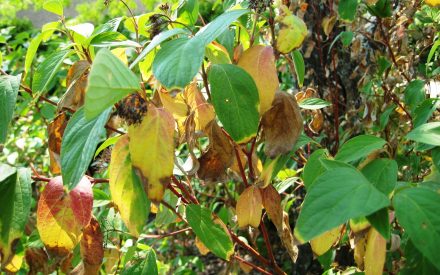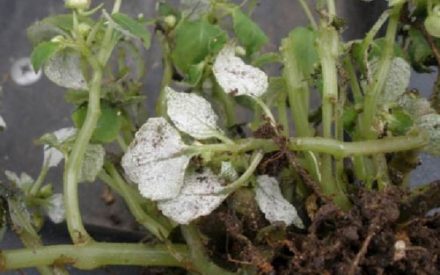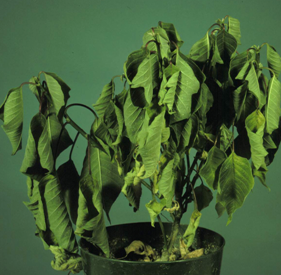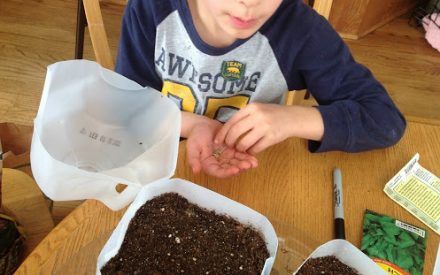What is damping-off?

Damping-off is a common and fatal disease that affects all types of plant seedlings. The disease is most prevalent when seeds are germinated in cool, wet soils. Fortunately, seedlings are susceptible to damping-off for only a short period following emergence. As plants age, their susceptibility to damping-off declines.
What does damping-off look like?
Seedlings killed by damping-off initially are healthy but shortly after emergence become infected at or just below the soil line. The lower stems of the seedlings collapse, and the seedlings fall over onto the soil surface. The seedlings subsequently die.
Where does damping-off come from?
Damping-off is caused by several soil-borne water molds and fungi, including (but not limited to) Pythium spp., Rhizoctonia solani and Fusarium spp. These organisms readily survive and are moved in soil or on soil-contaminated items such as pots, tools and workbenches.
How do I save seedlings with damping-off?
Seedlings with damping-off will die and cannot be saved. Proper prevention is the only way to avoid problems with this disease.
How do I avoid problems with damping-off in the future?
When planting seeds, make sure that work areas, tools and pots are pathogen-free. Decontaminate tools and workbenches by treating them for at least 30 seconds with 10% bleach or (preferably due to its less corrosive properties) 70% alcohol (e.g., rubbing alcohol or certain spray disinfectants). Decontaminate pots by washing them with soapy water to remove bits of old soil, soaking them for at least 20 minutes in 10% bleach, and then rinsing them thoroughly to remove bleach residues. DO NOT reuse plastic pots if you have had problems with damping-off or root rots (see UW Plant Disease Facts D0095, Root Rots in the Garden, for details) in the past, as they are difficult to decontaminate.
When planting, use a well-drained, pasteurized potting mixture. DO NOT use garden soils as they often contain damping-off pathogens. DO NOT plant seeds too deeply, and germinate seeds at high temperatures, so that seedlings rapidly grow out of the stage where they are susceptible to damping-off. DO NOT overwater as damping-off organisms are more active in wet soils. If the techniques described above do not work, then consider using fungicide-treated seed. In particular, plants grown from captan-treated seeds tend to have fewer problems with damping-off.
For more information on damping-off:
Contact the University of Wisconsin Plant Disease Diagnostics Clinic (PDDC) at (608) 262-2863 or pddc@wisc.edu.
Authors: Brian Hudelson, UW-Madison Plant Pathology
Last Revised: 02/29/2024
D-number: D0038
References to pesticide products in this publication are for your convenience and are not an endorsement or criticism of one product over similar products. You are responsible for using pesticides according to the manufacturer’s current label directions. Follow directions exactly to protect the environment and people from pesticide exposure. Failure to do so violates the law.
Thanks to Lis Friemoth, Ann Joy and Ann Wied for reviewing this document.
A complete inventory of UW Plant Disease Facts is available at the University of Wisconsin-Madison Plant Disease Diagnostics Clinic website: https://pddc.wisc.edu.
Send a Plant Sample for Analysis
Be cautious when self-diagnosing plant health issues. Very few diseases can accurately be diagnosed by eye.
Contact the UW Plant Disease Diagnostics Clinic (PDDC), and for a small fee, clinic staff can examine a plant, determine the cause of the disease/disorder, and provide advice on how to control or prevent the issue.
Download Article





 Drought and Watering of Ornamental Plants
Drought and Watering of Ornamental Plants Impatiens Downy Mildew
Impatiens Downy Mildew Root Rots on Houseplants
Root Rots on Houseplants Seed Starting
Seed Starting


